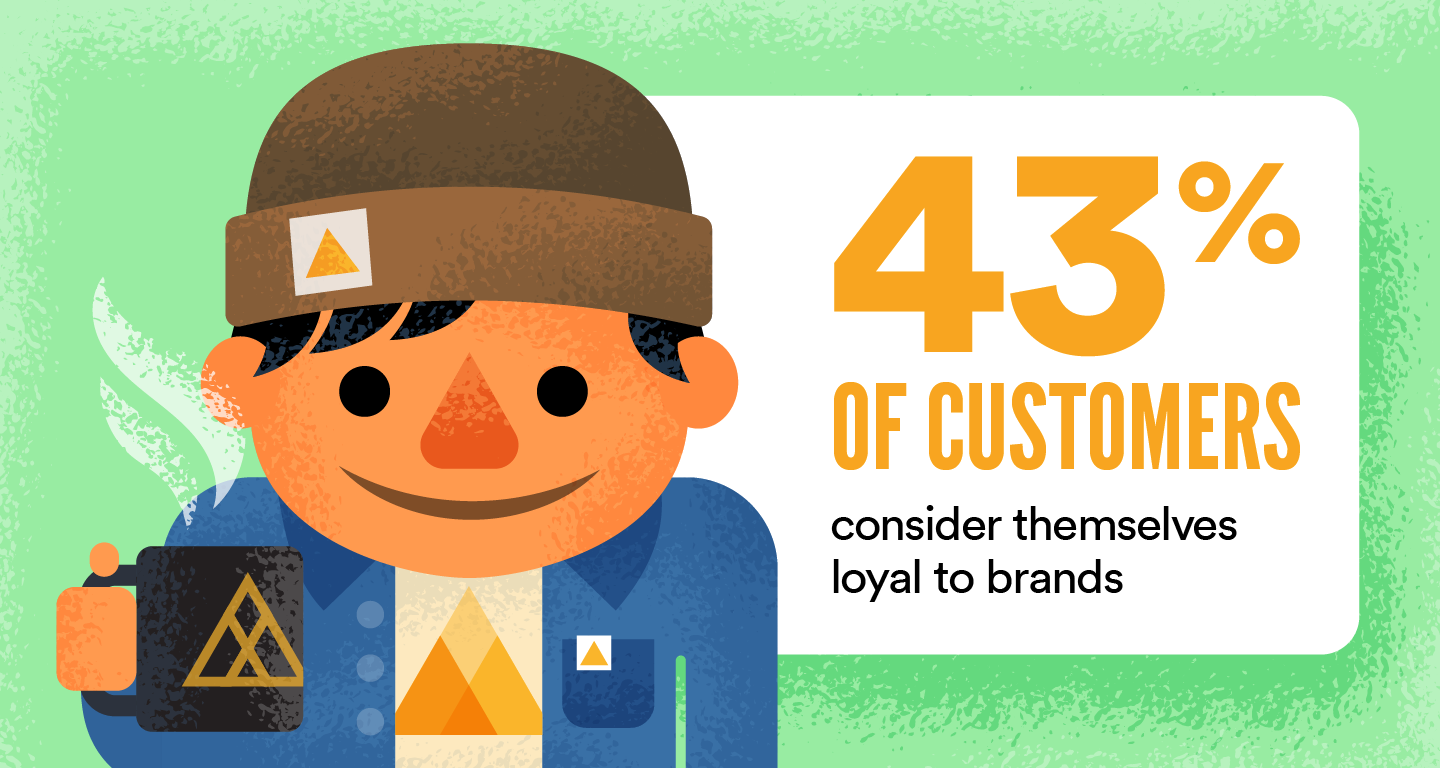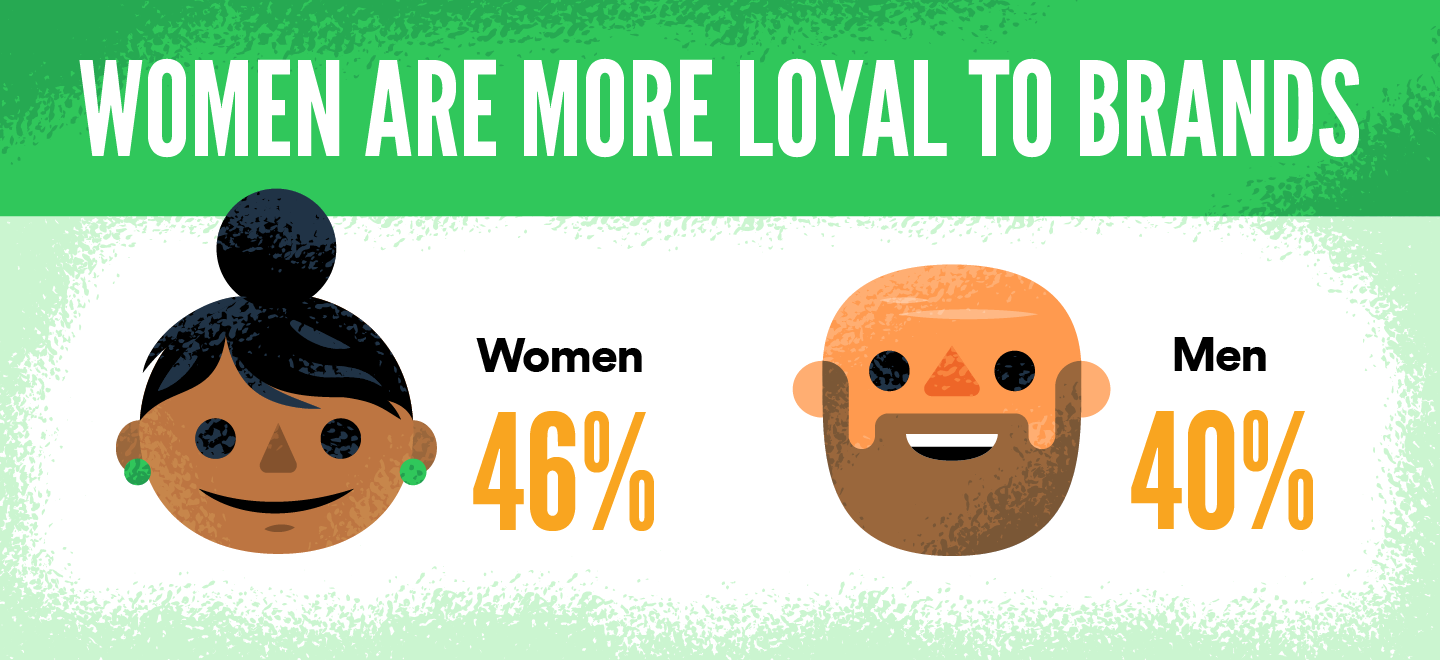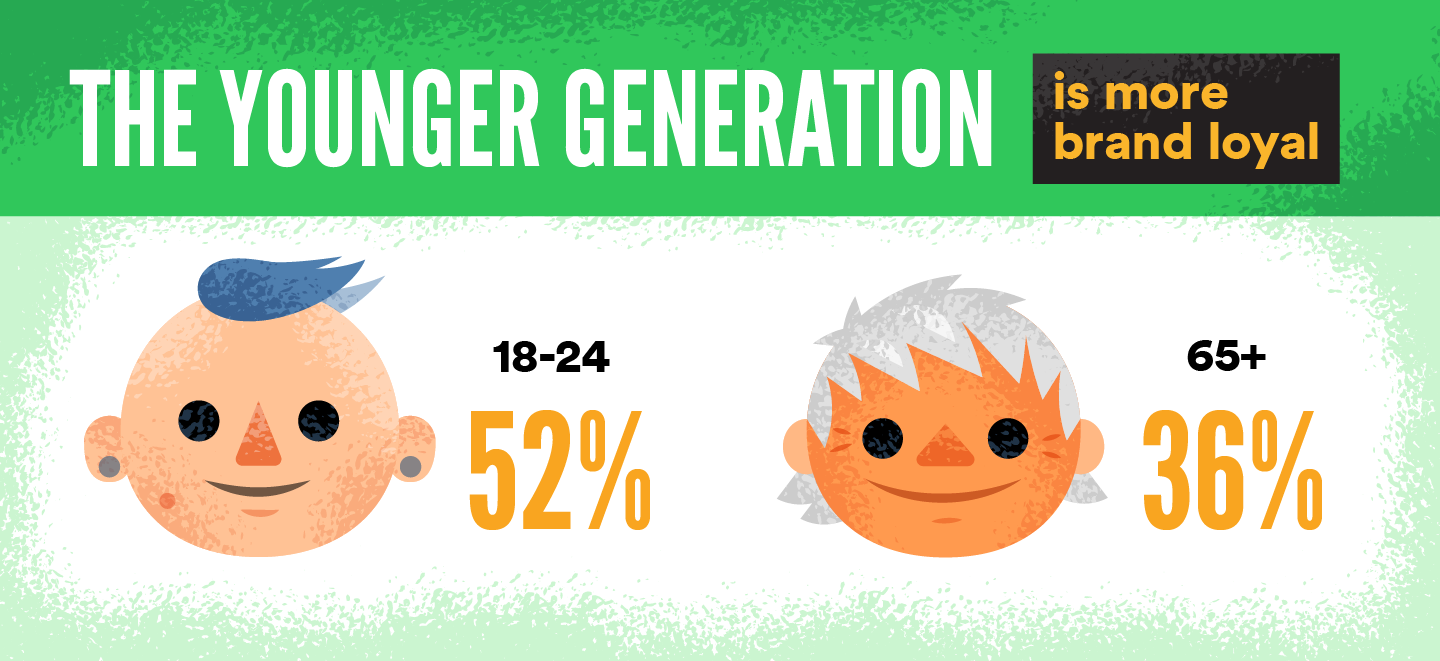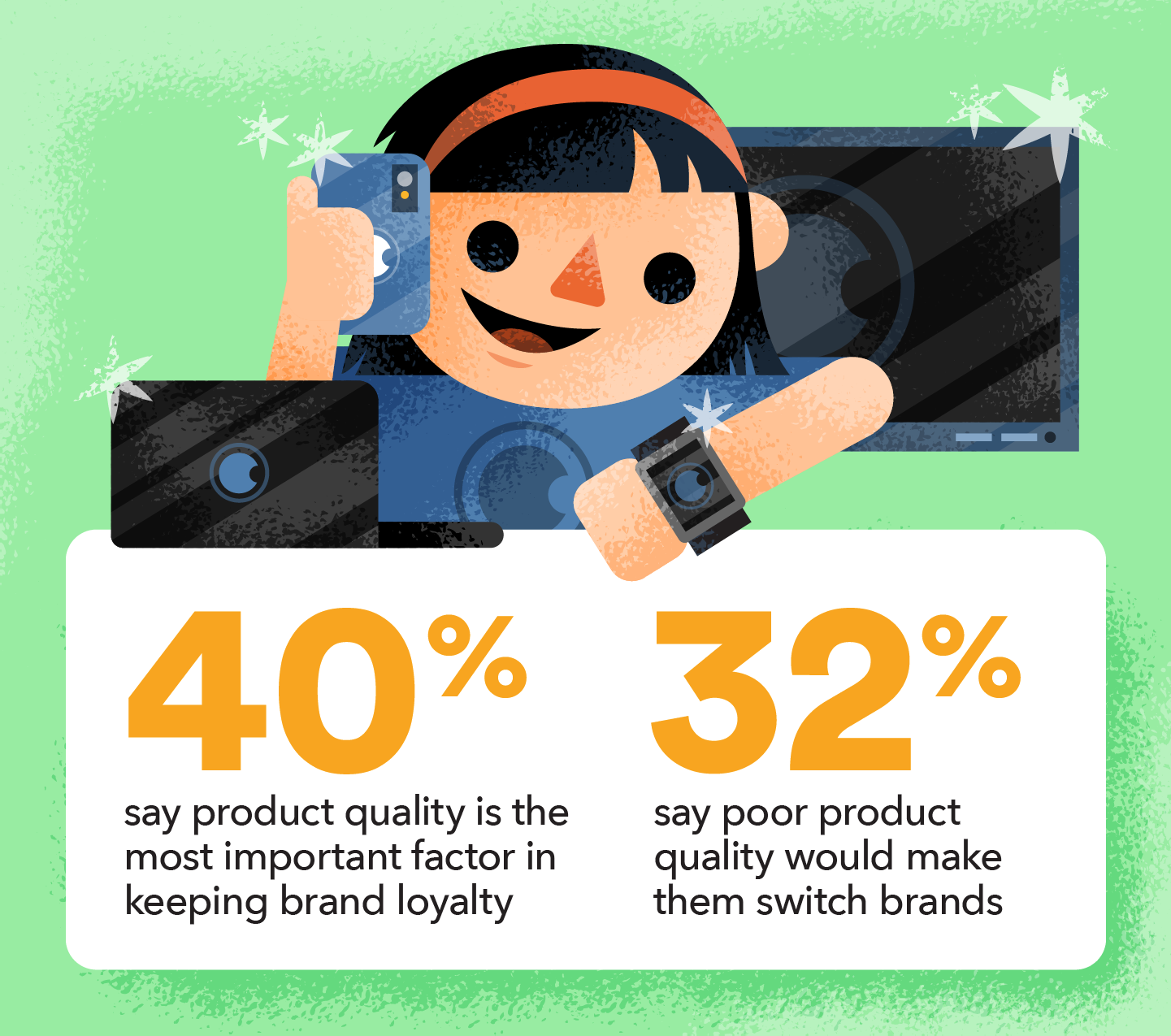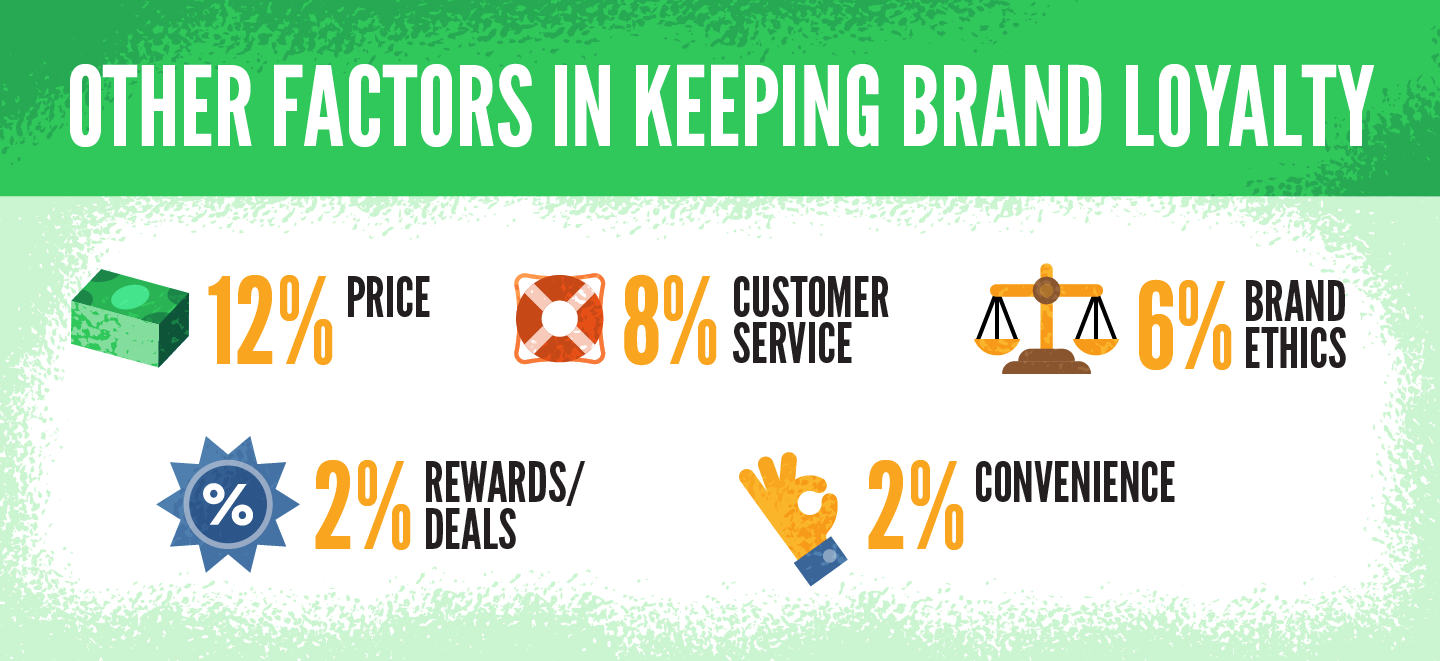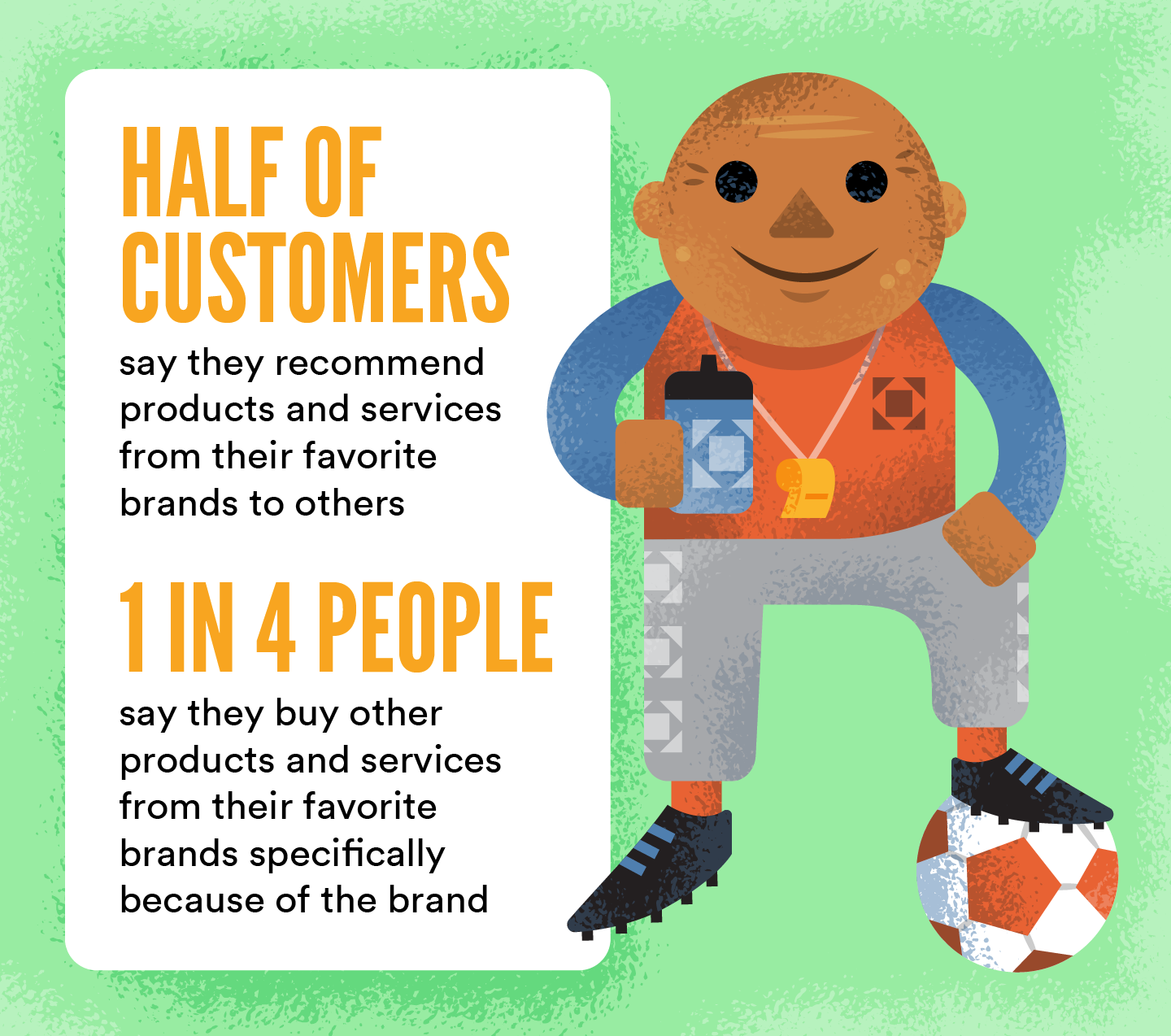Jif or Skippy peanut butter? Nike or Adidas running shoes? Tide or Gain laundry detergent? Everyday consumers answer questions like these to help them make purchases. It could take a second thought or comparing reviews in order to decide. Most likely, the decision is made subliminally in the consumer’s mind. A brand name can make the difference in purchase behavior.
If you offer the same product or service as your competitors, how can you differentiate your business from theirs? It’s all about your brand image. This image is comprised of your ethics, values, look, feel, customer service, product quality and more. Maybe you can’t afford to offer a lower price, but you can provide a greater intrinsic value to incentivize purchasing from your business.
In fact, some brands are so successful in creating a cohesive image, consumers remain loyal even if it costs more. For example, Apple offers some of the most expensive technology you can buy, yet people have no problem waiting in line to spend hundreds of dollars. Even though Samsung also has sophisticated smartphones and tablets, people aren’t camping outside to get them. Why is that?
The short answer is simply branding. Not only is Apple’s advertising sleek and persuasive, but their branding is elegant all the way down to their packaging. By having an Apple product, people can perceive themselves (or appear to others) as high-class. The long answer is Apple’s entire ecosystem of technology. All of their products are designed to integrate and work seamlessly together, which isn’t the case for any other company.
How can you follow in Apple’s footsteps (no matter what industry you’re in) to attract such a large and loyal customer base? It won’t be easy. Brand loyalty is harder to find in a time with limitless purchase options and cluttered media.
In decades past, brand loyalty was common among most consumers. Weekly or monthly routine purchases from the local store became habitual. People typically bought the same tried-and-true brands that they grew up using. Why wouldn’t they? There wasn’t a reason to switch brands.
In today’s day and age, people have an overwhelming amount of choices to make. It would be nearly impossible to decide if we had to sit down and analyze each brand and product objectively. Brand loyalty provides a kind of heuristic (or mental shortcut) that guides consumer behavior. We interact with these brand on social media, hear about them from friends and see them on television. Whether it’s rational or not, we pick a favorite brand and stick to it until it gives us a reason to take our business elsewhere.
Product quality, price, customer service, brand ethics, rewards and convenience are all important factors in keeping brand loyalty. If you have the same product quality as the lead competitor, you can implement the other aspects to give consumers a reason to pick you.
People like brands that make them feel good about their purchase decisions. You can confirm their choices by offering rewards or donating to charity. Some brands even feature consumers on their social media accounts to invoke credibility and friendliness.
Brand loyalty also helps increase your profits. Even if you spend more resources to incorporate additional consumer services or communicate values through action, in the end you’ll likely raise revenue. As long as you focus on keeping customers rather than exploring new target markets, your expenses will be more effective and efficient. Customer retention is far cheaper than customer acquisition.
To help you start fostering brand loyalty among your consumers, Wikibuy surveyed 5,000 consumers to get their perspective on brand loyalty. The results will help you develop a consumer-oriented business model and finetune your marketing strategy. Check out the results below to learn what you need to know about brand loyalty in 2019.
Please include attribution to https://wikibuy.com/ with this graphic.
—
Author bio
Luke Fernandez runs Growth at Wikibuy, a consumer product that helps shoppers know when, where, and what to buy. As a Product and Growth leader, Luke has helped Fortune 500 companies and startups alike drive best-in-class marketing through technology and data.

